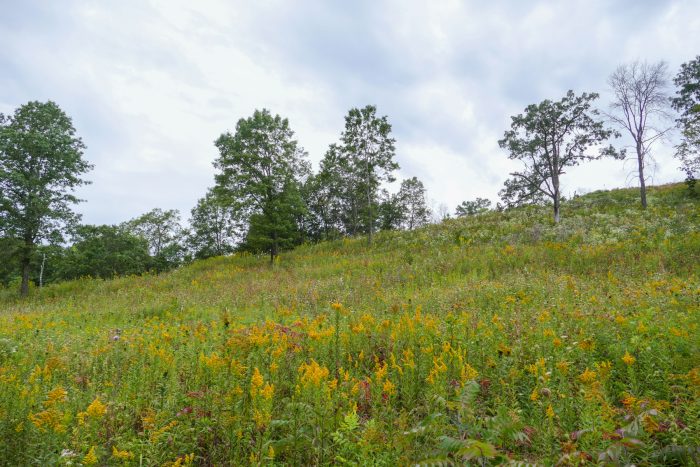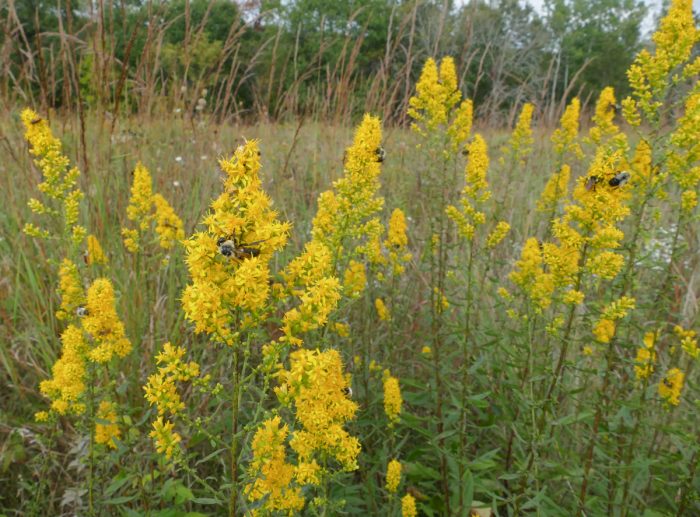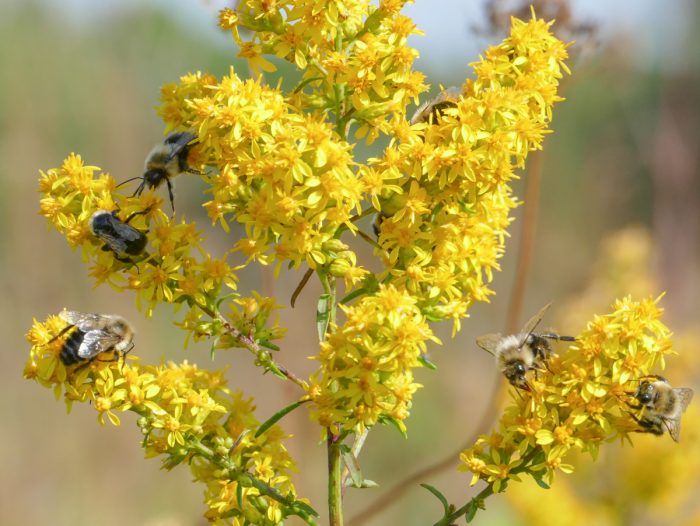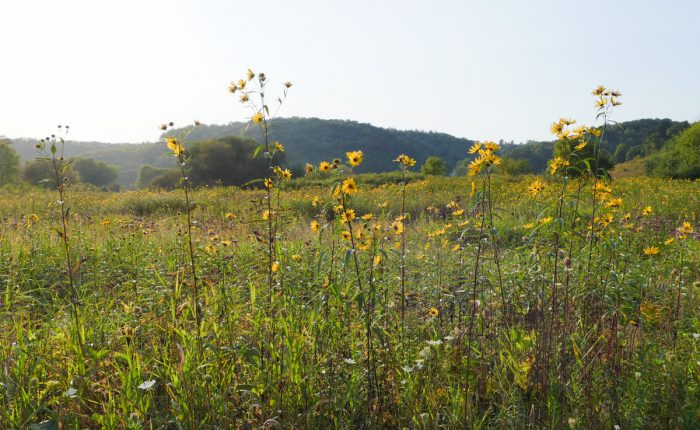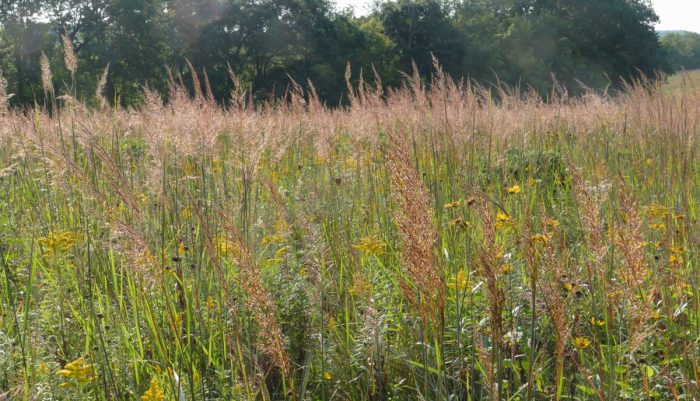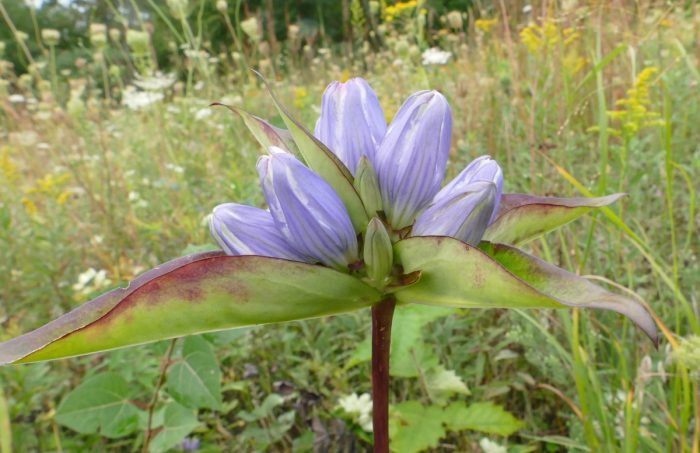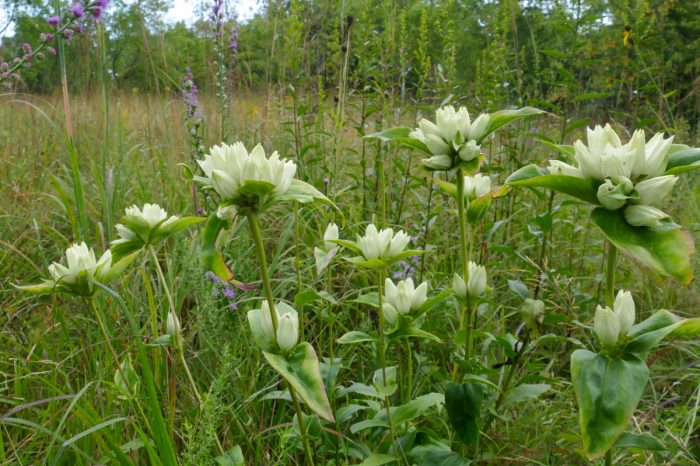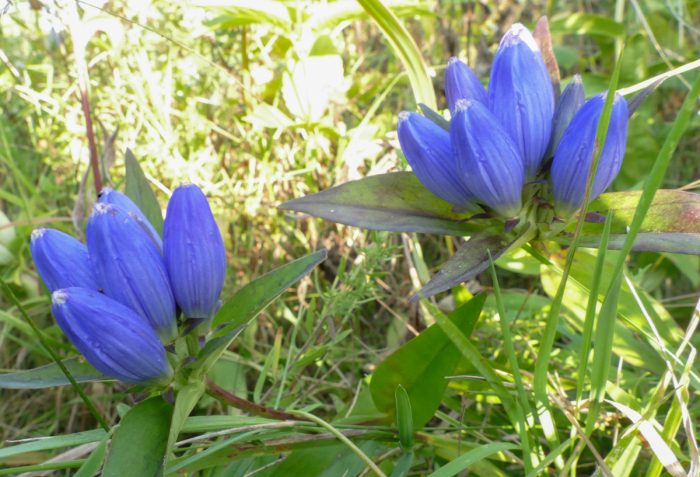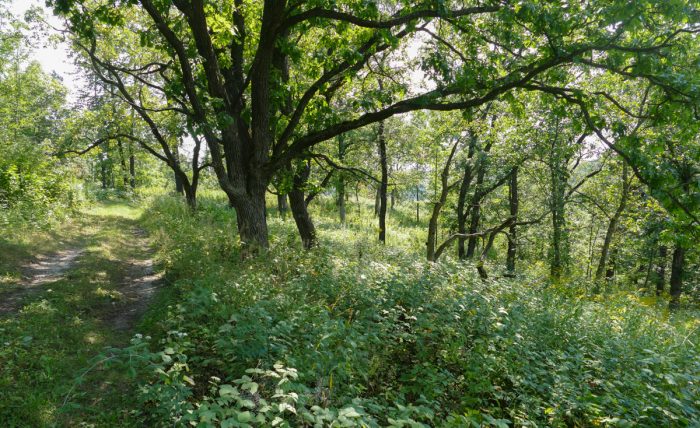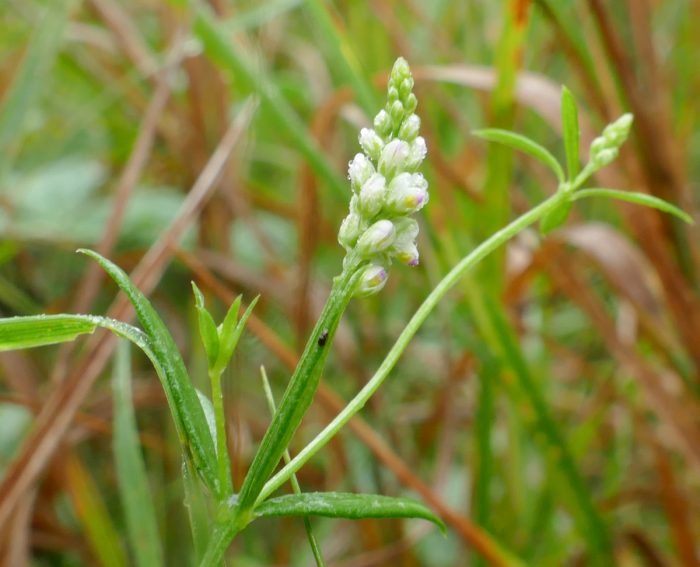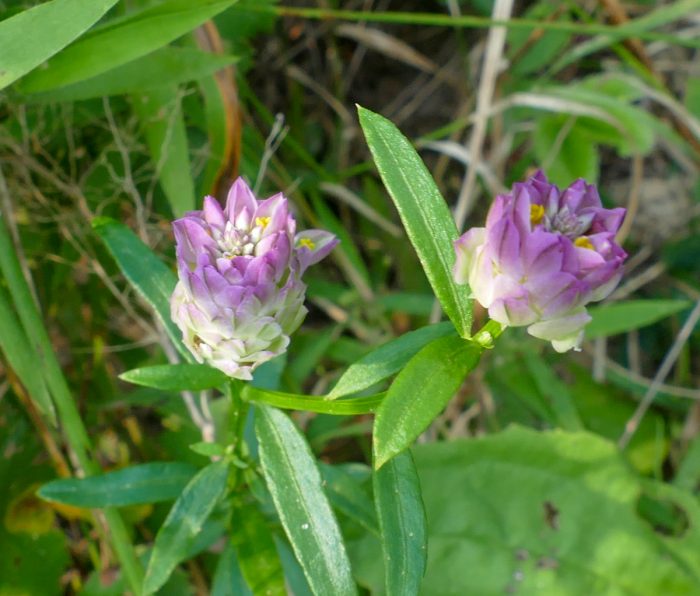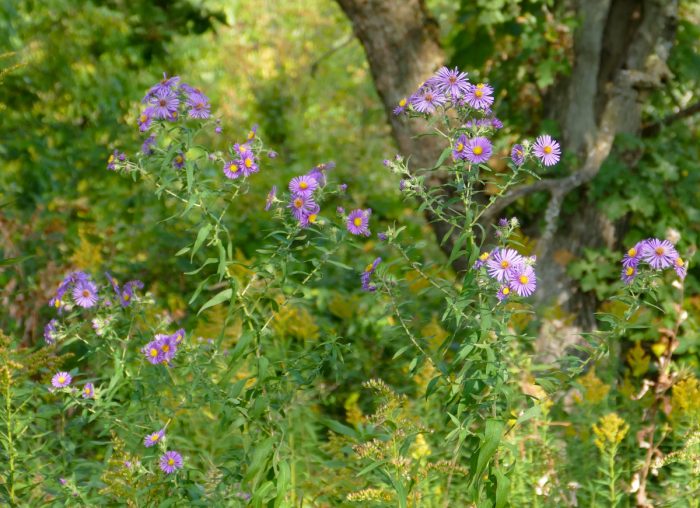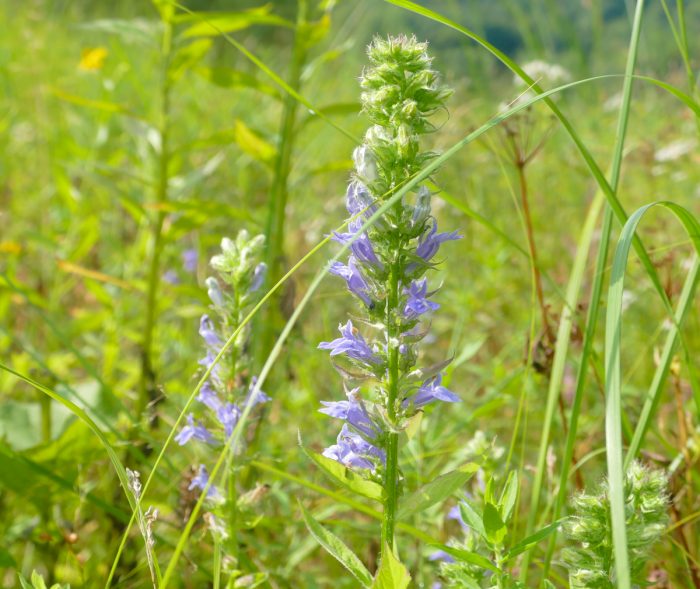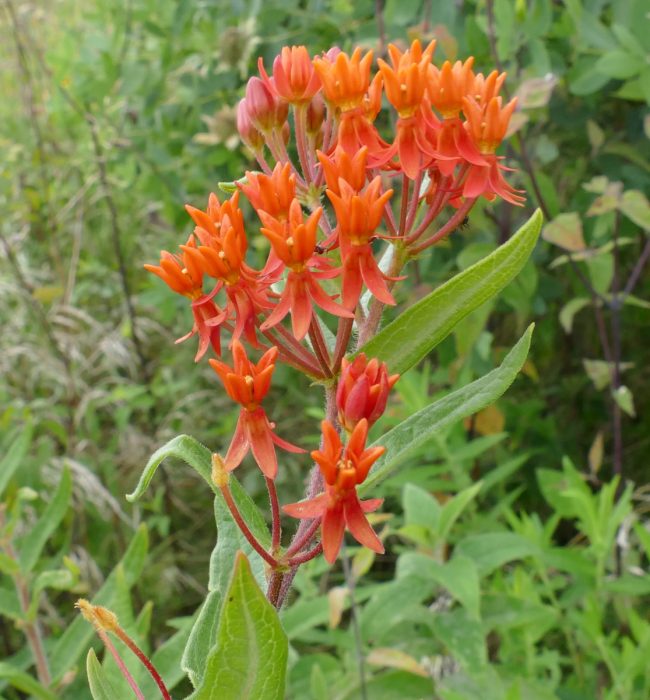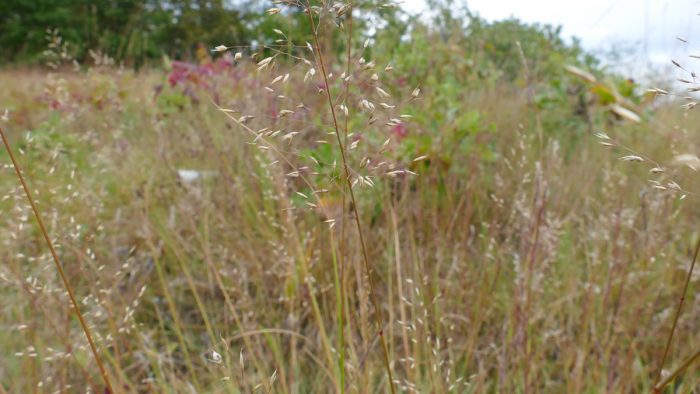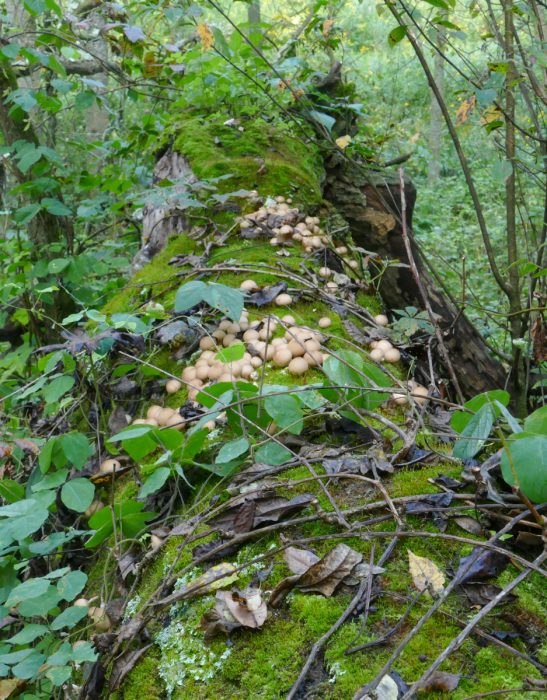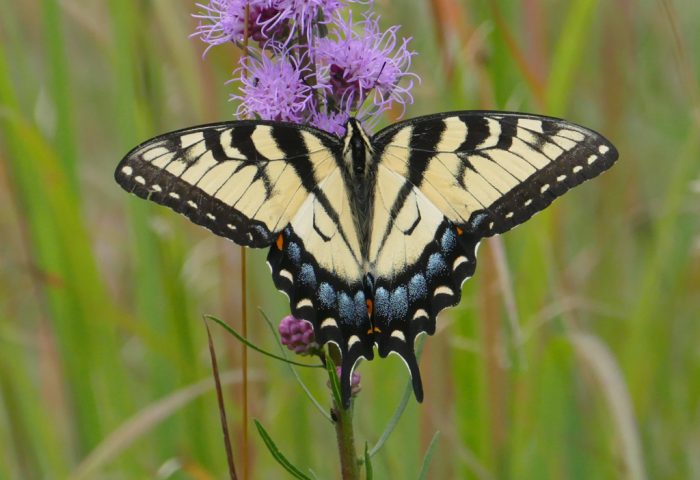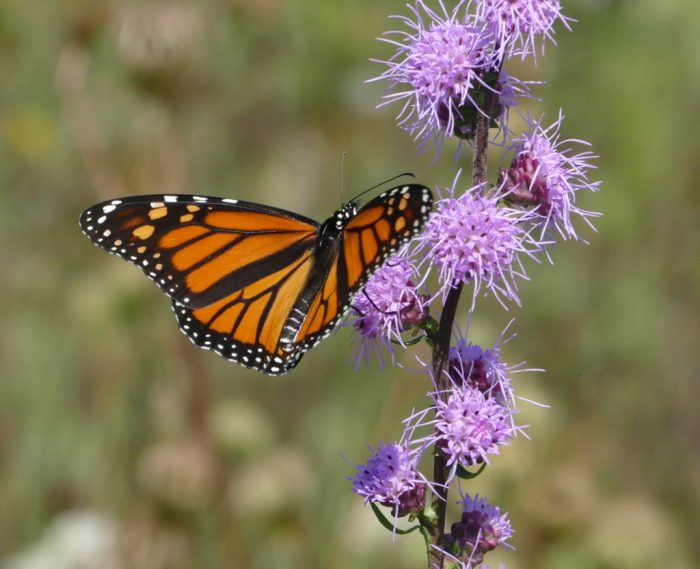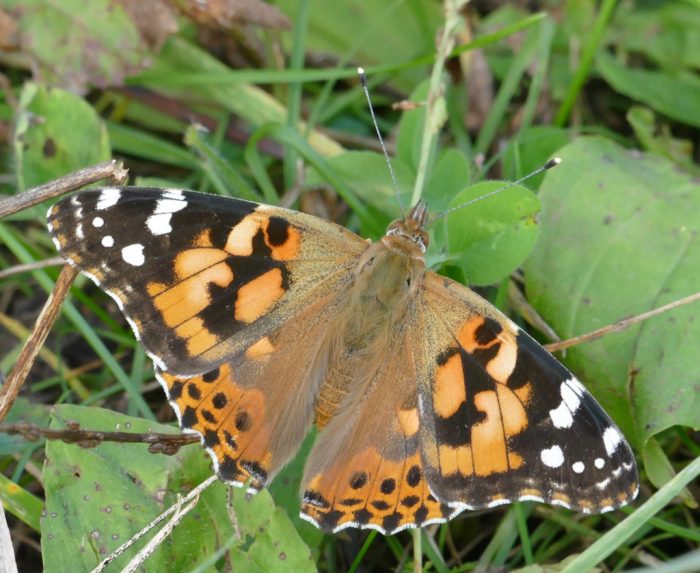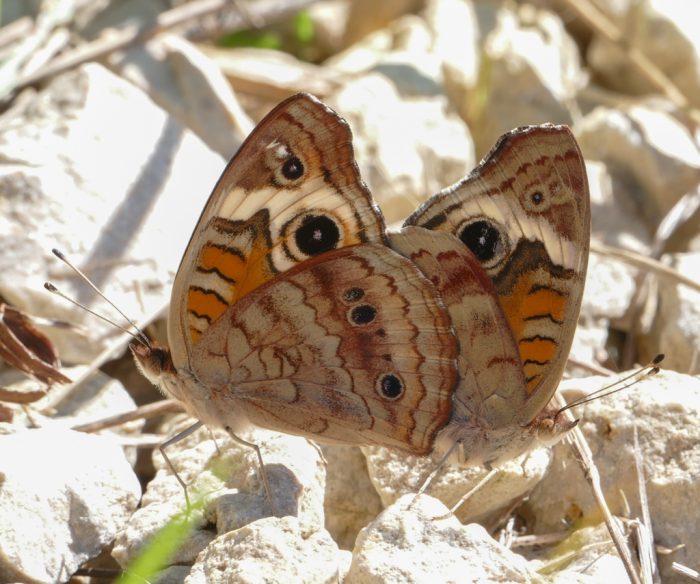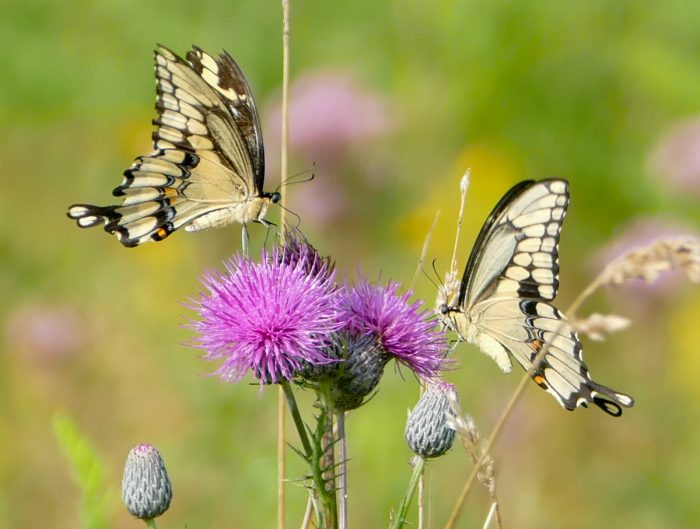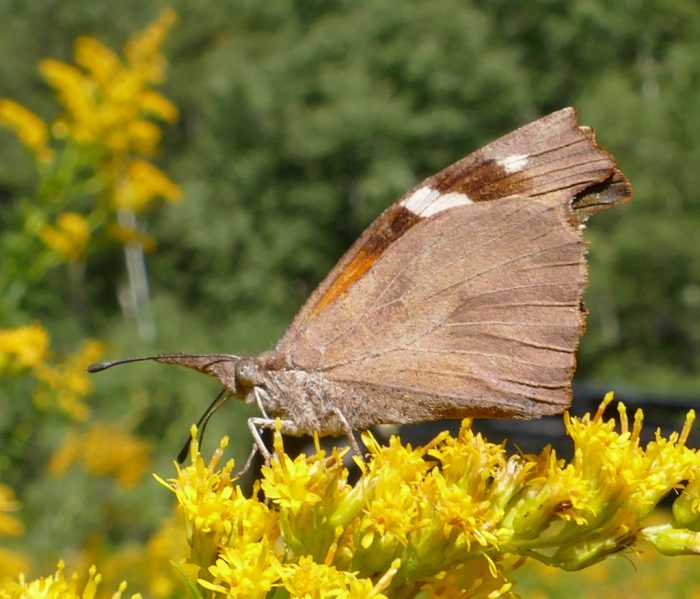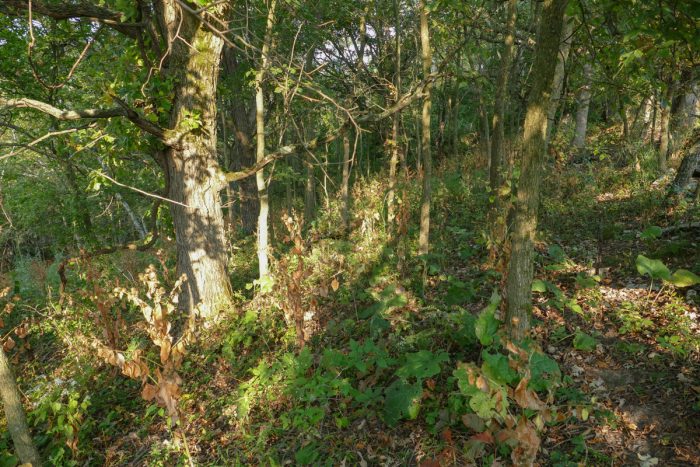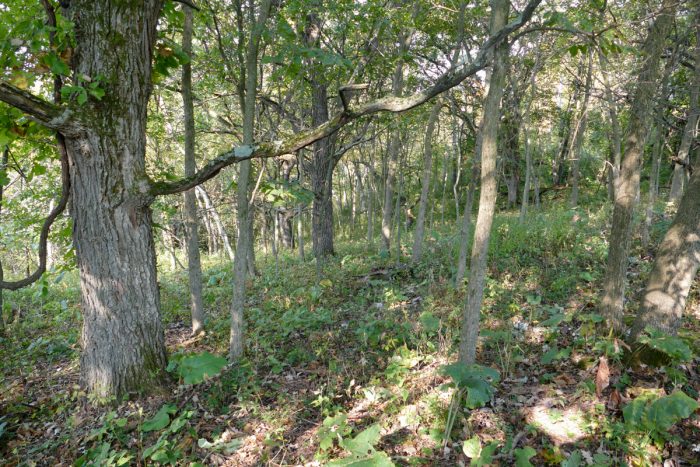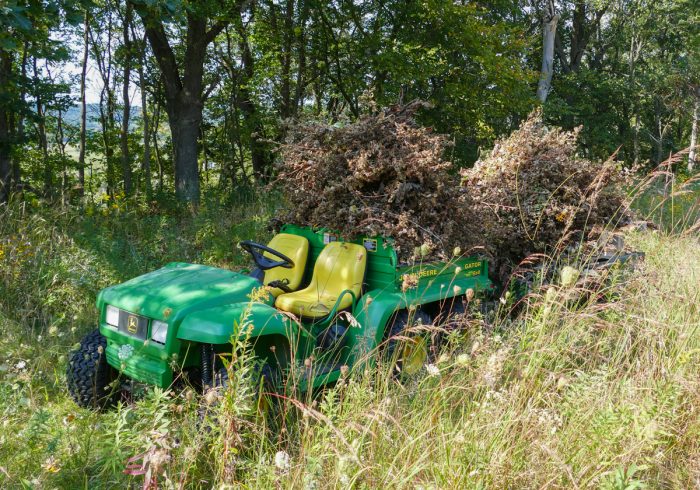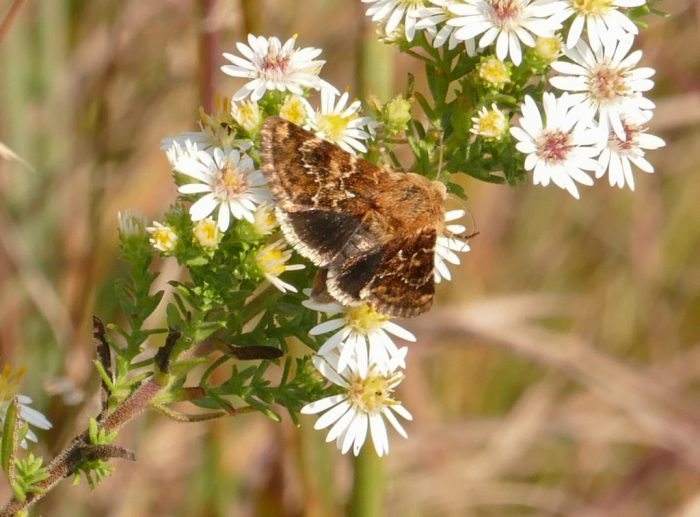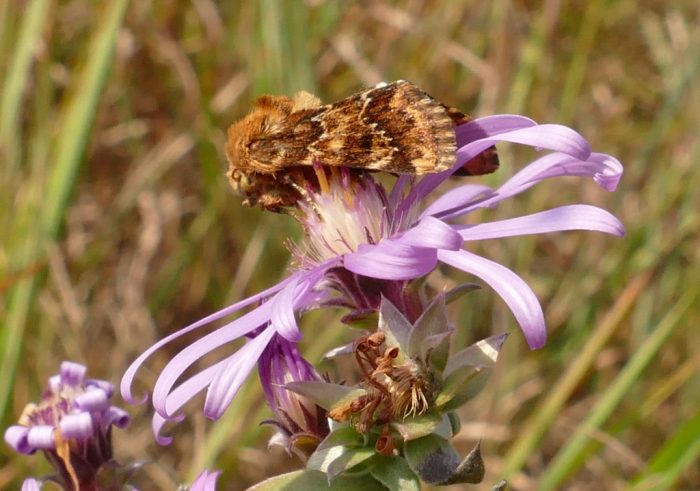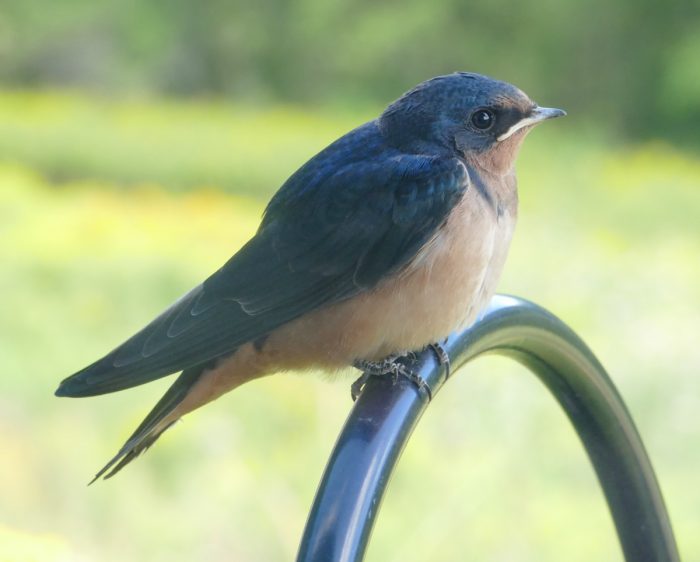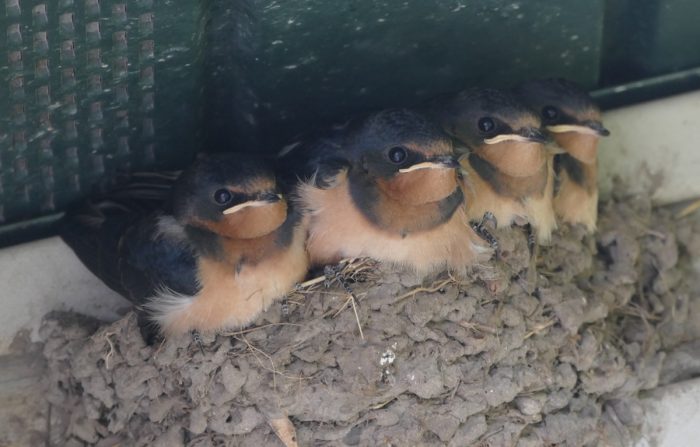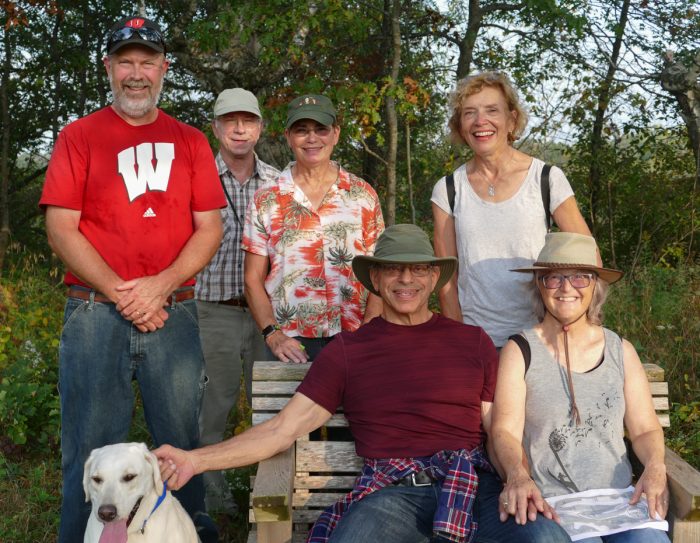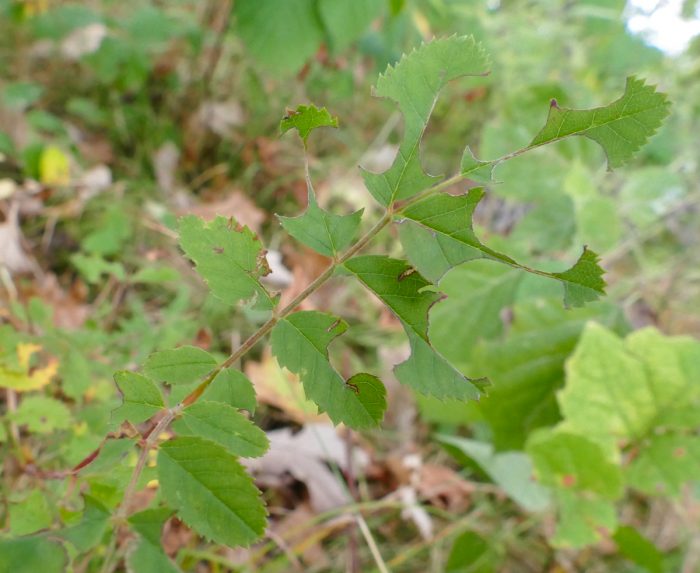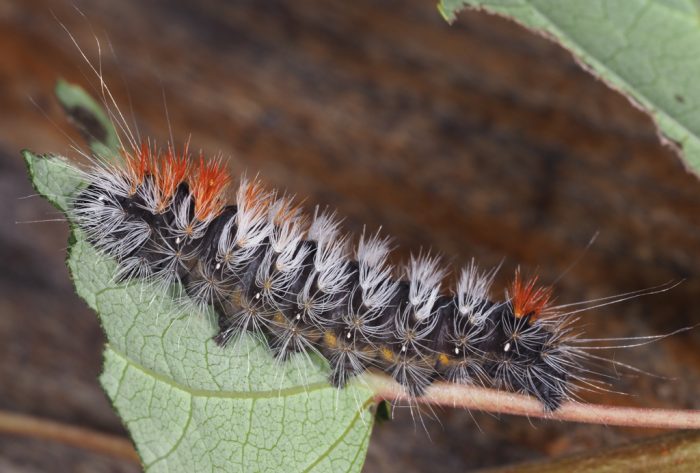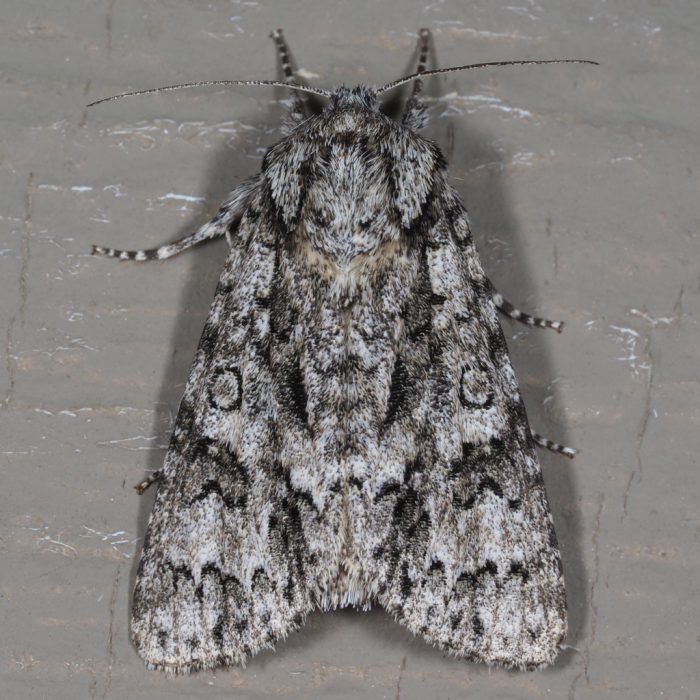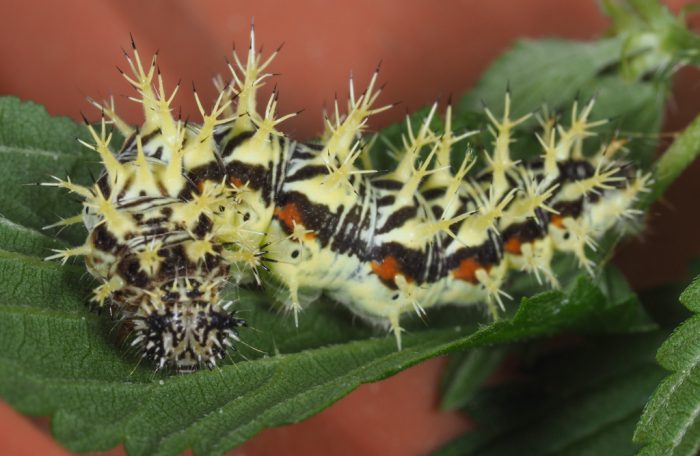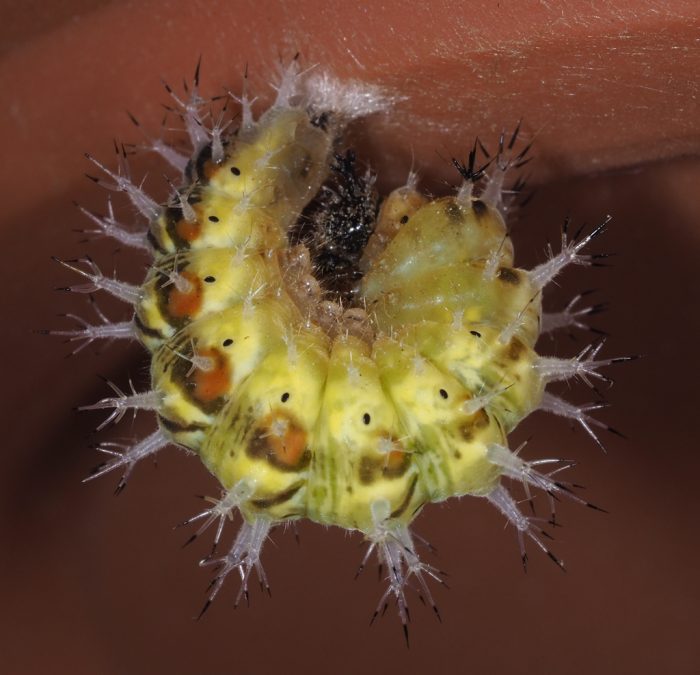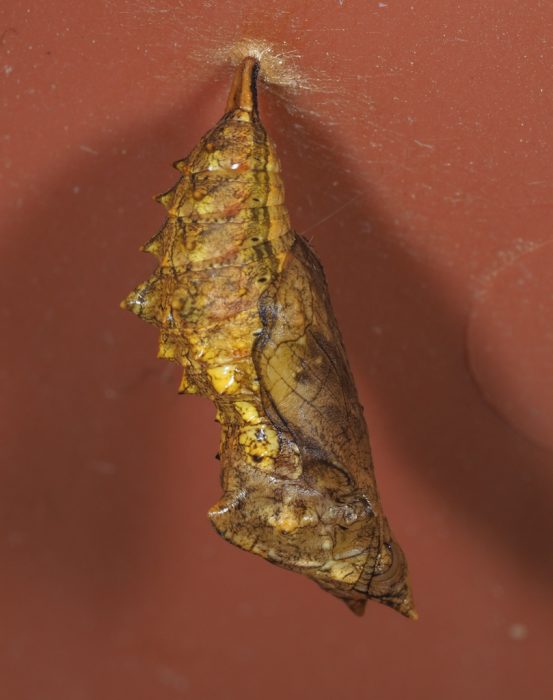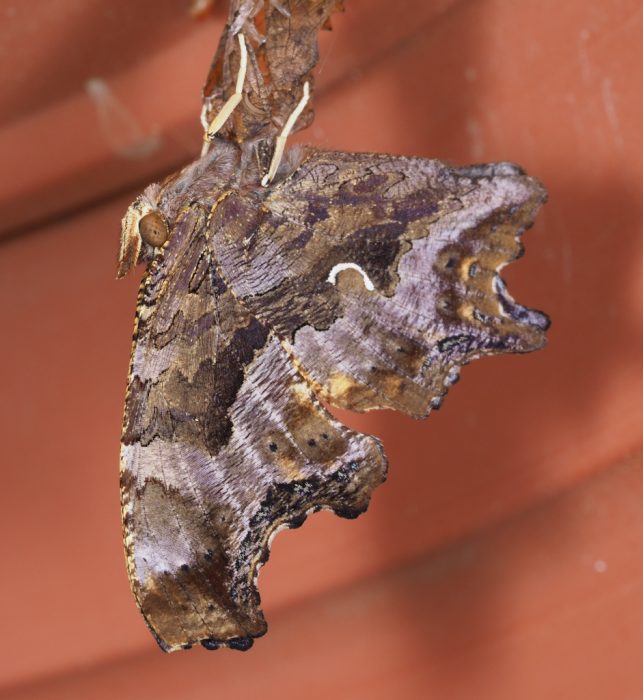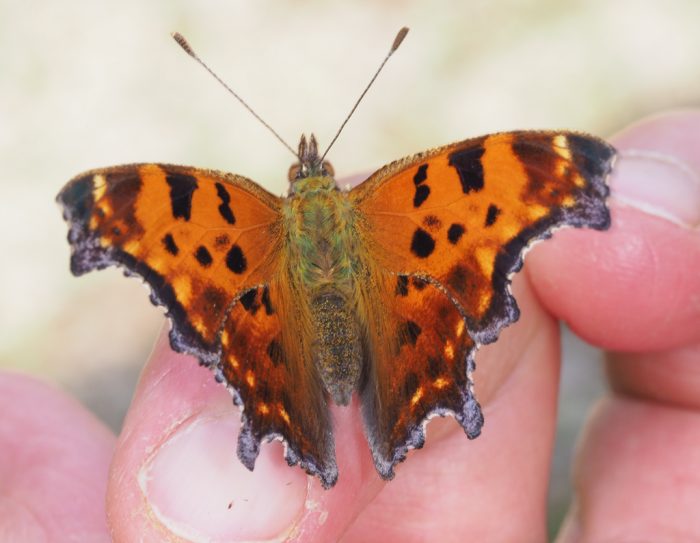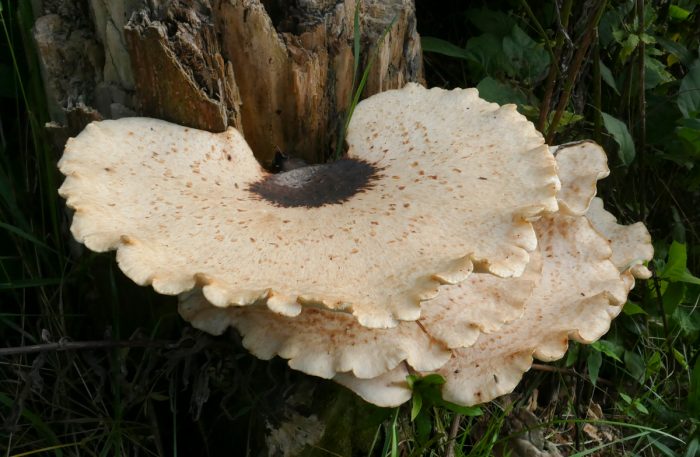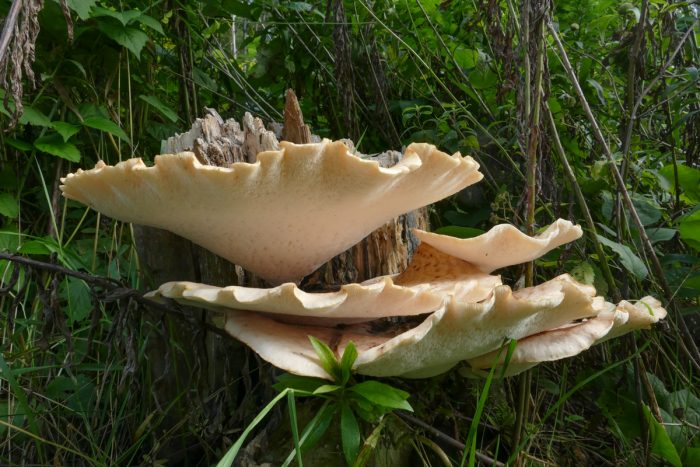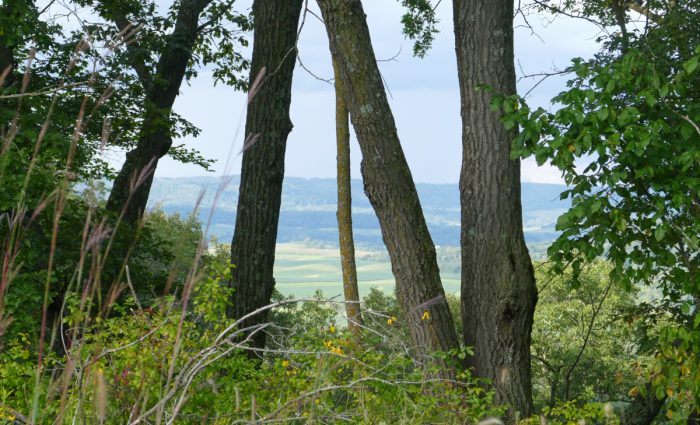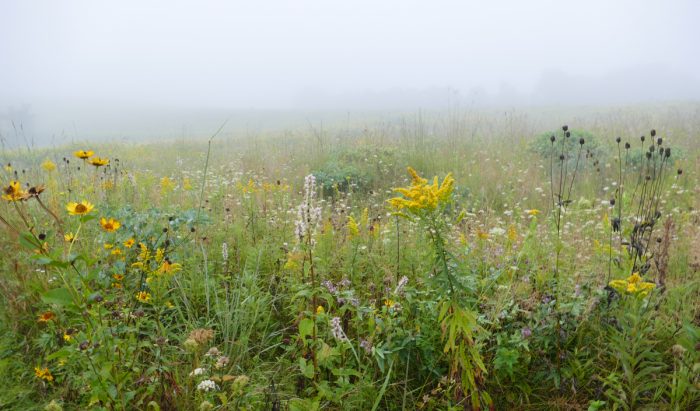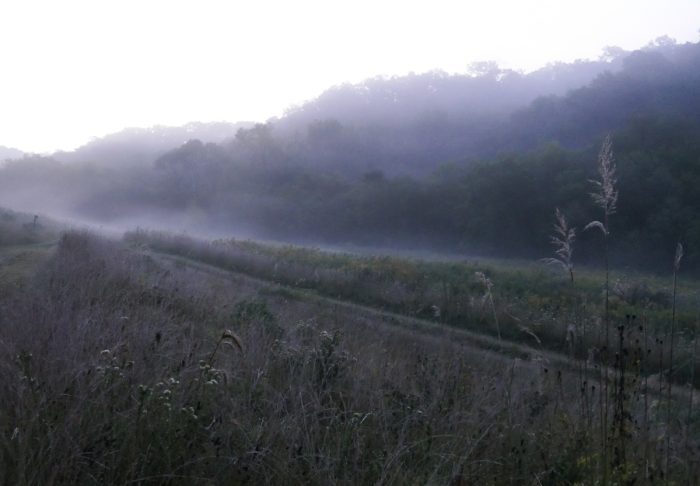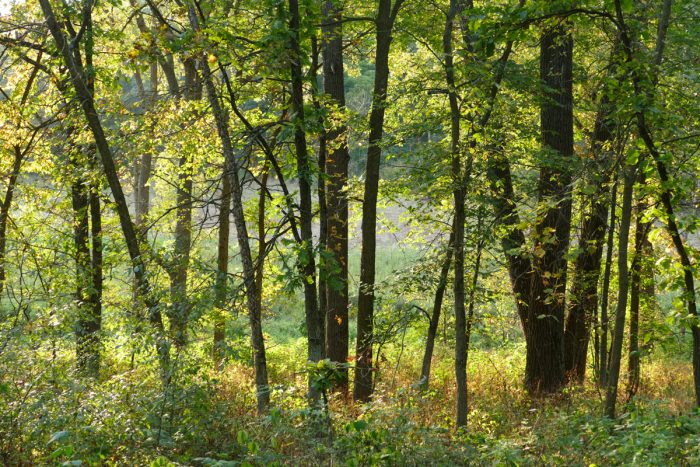Most of our trees are still green, but fall flowers are starting to bloom – goldenrods, gentians and asters.
A fall view of the newly cleared Hidden Oaks Hillside
The favorite flower right now, with both Monarchs and bumblebees, is Showy Goldenrod.
Bumblebees on Showy Goldenrod
Tall Sunflower in the wetland
Fall Indian Grass
For years now I’ve noticed these pale blue gentians in the Narrows Prairie (a planted prairie). They don’t look like Bottle Gentian – too pale, and with folds at the edges of the petals. But they’re blue, not white, so they don’t fit White Gentians either. I finally looked them up and confirmed that they’re naturally occurring hybrids between these two species. All three grow near each other here, so it would be easy for them to hybridize.
Hybrid Bottle Gentain
White Gentian
And Bottle Gentian.
Indian Grass Savanna still looks very green
The Milkworts are in bloom too. This is Whorled Milkwort – a tiny plant, only a few inches high.
And Field Milkwort – slightly taller.
New England Aster
Blue Lobelia
We’re still seeing a few Butterflyweed plants blooming. They have an amazingly long blooming period – we see the first flowers at the end of June.
Prairie Dropseed
Fallen tree in the woods with a whole world of plants and animals living in and on and around it.
Tiger Swallowtail on Rough Blazing Star
We’ve started counting the Monarchs we see on our afternoon walk. We take the same walk every day, so it’s interesting to see how the numbers vary. On the best (warmest, sunniest) days we’ve usually seen 11 or 12, but on September 15 we saw 39! That may have been the peak of the migration here.
Monarch on Rough Blazing Star.
We haven’t been seeing as many Painted Ladies as folks in Iowa and Minnesota, but we’re still seeing more than in most years. In the last week, we’ve seen almost as many Painted Ladies as Monarchs.
Mated Common Buckeyes
Giant Swallowtails on Swamp Thistle
American Snout Butterfly – the only one I’ve seen this summer
One of my projects in the last few weeks was to remove Burdock from the woods above and to the west of Big View Prairie. That woods is a savanna remnant, and I’m preparing it for some tree clearing work that we’re hoping to get done this winter. We’d like to get the small trees cleared out, leaving just the big oaks.
Here it is with lots of burdock scattered through the woods.
And the same woods without burdock. I’ve been clearing the burdock out for a few years, so I’m hopeful that there will be less of it to do next year.
Here’s some of the burdock heading down to the compost pile. The surrey doubles as a trailer for hauling invasives.
I went searching for Northern Flower Moths on Sumac Prairie last week – and found about 5. One had just been captured by a spider, but the rest were flying and nectaring. Always before I’ve only seen them on purple asters – which is where they lay their eggs. This time I also saw some on Heath Aster and Gray Goldenrod.
Northern Flower Moth on Heath Aster
and on Silky Aster.
The Barn Swallows that nest under the eaves of our porch raised three nests full of babies this year. The last batch took several days to actually leave the nest. They’d fly around, sit in other spots – even sometimes on old, unused nests – and then fly back to sit in their own nest and ask to be fed.
Here’s a baby on the crook that holds up our hummingbird feeder.
Then, later, all the babies were back in the nest.
After about 3 days of that, they were gone – maybe to join the big migrating flocks we see along the Buffalo River.
We had the first Prairie Potluck here last weekend. We’re hopeful it will happen again. It would be fun to have a regular gathering where we can visit people’s prairies, and exchange ideas about prairie and habitat restoration.
These are the folks who did the hike to see our prairies.
Leafcutter bees cut pieces from leaves to line the nests they make for their eggs. This wild rose has been used a lot – making the leaves look like lace.
I’m still finding caterpillars, and rearing them to learn about their life cycles.
This is an Impressed Dagger (moth) caterpillar eating aspen leaves. I think it will spend the winter as a pupa, and the adult will emerge in the spring.
The is an adult Impressed Dagger from July.
I also reared Eastern Commas (butterflies) this summer. Their caterpillars eat nettles. We have a patch of nettles right outside our door – a great place to find interesting caterpillars. One day last month I found at least 8 Eastern Comma caterpillars there. I took 5 to rear inside.
Eastern Comma caterpillar
Eastern Comma caterpillar preparing to pupate
Eastern Comma chrysalis, hanging from the roof of the cage
Eastern Comma adult – just emerged
Eastern Comma being released
These are huge fungi that were growing from a dead elm stump. Pete Hautman identified them for me as Polyporus squamosus – or Dryad’s Saddle. They’re as big as dinner plates.
Dryad’s Saddle
View over the ridge, into the next valley
Prairie in the mist
Morning mist
Trees along the Cabin Road

